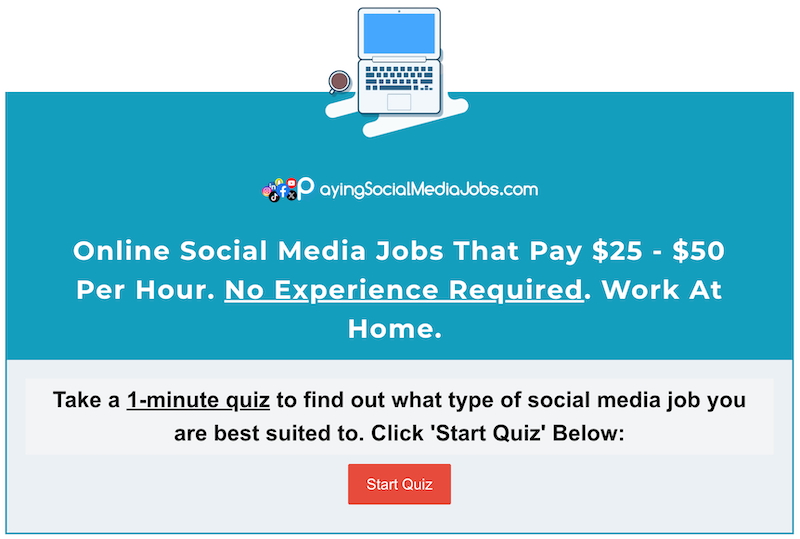We may love to watch the drama, but no one wants to get involved in a real conflict. If you find yourself caught up in some dramatic affairs, here’s how to resolve the conflict.
Whether you like it or hate it, there will be conflict. You can try to avoid conflict as much as you want, but sometimes you have no other choice but to get involved. And knowing how to resolve conflict is an important skill to learn in life.
Now, you might be thinking that conflict is a bad thing, but it’s not. It’s just two *or more* opposing ideas. Does this mean there is going to be a war? No, it just means that you don’t agree with the other person.
science of conflict resolution
Have you ever wondered what goes on in the minds of people who are experts in resolving disputes, like diplomats or top CEOs? It is a mixture of psychological intelligence and strategic thinking that turns heated debates into scuffles.
At the heart of conflict, there is often a complex mix of cognitive and emotional elements. Our brains process information and perceptions in ways that can either stoke or extinguish the fire of disagreement. For example, cognitive biases such as believing only what supports our viewpoint can increase conflict.
Emotionally, conflicts produce a mix of emotions – anger, frustration, even sadness. These emotions can cloud our judgment, yet they also hold the key to the solution.
Studies show that emotional intelligence – the ability to understand and manage emotions – is a game-changer in conflict resolution. This insight is not just academic; It is a practical tool for those wondering how to resolve conflict effectively.
Sympathy is another star player in this field. It’s like a secret weapon that allows us to see the world through another’s eyes, to understand their feelings and viewpoints without necessarily agreeing with them. Empathy is what transforms impasse into dialogue, enabling us to navigate the choppy waters of disagreement with a sense of shared humanity.
However, effective conflict resolution flourishes when we operate from an adult state of being characterized by rational and respectful communication. Then there is Cognitive Behavioral Therapy *CBT*, a staple in therapeutic settings, which is also a treasure trove for resolving conflicts.
CBT encourages us to challenge the distorted thinking patterns that often add fuel to the fire of conflict. By taking a more balanced approach, we can approach disagreements more constructively.
Self-assessment and emotional regulation
Yes, it’s all about getting a clear picture of where you stand emotionally and mentally. This step is extremely important to ensure that you are in the best mental state to handle any conflicts that come your way.
1. Mirror of self-awareness
Becoming aware of your feelings, thoughts, and behaviors is the first step in conflict resolution. It’s about understanding your role in the conflict and how your actions and reactions may contribute to it. Self-reflection is important because it helps you look at the situation objectively, making it easier to find a middle ground.
2. Riding the emotional waves with mindfulness
Mindfulness involves being present in the moment and accepting your feelings without judgment. Practicing mindfulness helps you recognize your emotions, understand why they are arising, and keeps you from becoming overwhelmed by them.
3. Balancing Act of Emotional Regulation
Emotional regulation is not about turning off your emotions, but learning how to control their intensity.
Techniques like deep breathing or progressive muscle relaxation can be incredibly helpful in moments of high stress. They help reduce your stress levels and give you a sense of calm, which in turn allows for clearer thinking and more measured reactions rather than impulsive reactions.
4. Being aware of your personal triggers
Knowing what triggers strong emotional reactions in you enables you to develop strategies to control these reactions. If you’re aware of what typically irritates you — maybe it’s a certain tone of voice or a specific word — you can prepare yourself to handle it better. This way, you’ll be less likely to get upset unexpectedly, keeping the conversation smooth and focused on the real issues.
5. Practicing the art of self-regulation
Improving your emotional regulation skills takes practice, just like any other skill. Engaging in regular activities like journaling, meditation, or physical exercise can greatly increase your ability to manage your emotions.
Developing these habits serves a dual purpose: They not only prepare you for more effective conflict resolution but also contribute to better overall emotional health.
How to Resolve Conflict and Cut Drama
In this situation, the roommate has not expressed his or her disappointment with the visiting friend. They might make a light-hearted comment or decide to go out for drinks with a friend instead of addressing the issue directly. This avoidance may seem like a temporary solution, but it sets the stage for a larger conflict in the future. Strange as it may be, it is necessary to address this issue head-on.
Such everyday scenarios highlight the importance of learning how to resolve conflict. It’s about facing the problem head-on, even when it’s inconvenient, to prevent a small misunderstanding from turning into a major argument.
1. Take a breath
2. Try to see the problem from a bird’s eye view
This won’t be easy, especially when you’re angry. Try to look at the situation objectively. You may not have even thought that you have done something wrong, but how would you feel if this happened to you?
3. Sit with the person *once you both have calmed down*
4. Describe the problem in the minimum number of words
No one wants to hear a monologue about what happened, it’s boring. Keep your problem brief and to the point. If your partner came home drunk last night, say, “It bothers me when you come home drunk late at night.” There, you explain the problem, you explain how it makes you feel. Now they will have to answer.
5. Let the other person answer
We know you’re angry but you won’t be able to find a solution unless you let the other person speak. So, when your speech is over, let them respond. But this part is important, don’t let them answer just for the sake of it. Actually, listen to what they tell you.
6. Don’t forget nonverbal communication
You may not notice it, but when you’re standing in the doorway with your hands on your hips listening to this person talk – you look like an ass. Your body language is extremely important during conflict resolution.
7. Don’t try to “poke” the person
We all know what makes someone we love really angry, but this isn’t the ideal step to take when knowing how to resolve a conflict with someone you care about.
But, that doesn’t solve anything. You’re not trying to gain an edge by putting them down, you’re trying to solve a problem. Drop your punches for boxing class.
8. Ask Questions and Get Answers
If you want to understand where this person is coming from, ask questions. Of course, don’t ask questions that have an accusatory tone. Ask simple questions like who, what, when, where, how. Look, it’s easy.
9. If you have multiple issues, focus on one at a time
It may be that you people are in for a shock after the pile of issues is piled on top of each other. This is exactly what happens when you don’t communicate properly. Do you now understand the importance of communication?
So, instead of yelling at each other and pointing out all the things they did wrong, focus on one issue. Don’t bring up other issues until you’ve resolved the issue you’re just talking about.
10. Embrace the things you’ve ruined
You probably could have handled some part of the situation better. Maybe you left when you couldn’t find your way and, of course, that caused a scene. You have to admit the things you have done poorly on. And there are some things that you did, remember them. Don’t play the victim.
11. Do you both agree on some things?
12. Make room for compromise
We know you probably want the whole situation to go your way, but I’m sorry to tell you that it probably won’t – unless they’re really wrong. But most likely, you will have to compromise.
Does your boyfriend need a car tomorrow? We know you want to meet your family but he may leave you. Is this the ideal situation for you, probably not, but you have to compromise.
13. Try to make a plan together to fix the problem
So, you talked about how you feel, they talked about how they feel. If you want to know how to resolve conflict, it’s time to figure out how you will solve the problem.
Is there something you need to do? Maybe you’re tired of always cleaning the house, but when you ask them to do it, you go ahead and clean anyway. Instead, stick to your guns. There is always a solution to conflict.
14. Don’t use passive behavior
Sometimes, we can’t help but be passive aggressive. We close our doors, we answer to that person like a donkey. Of course, this does not help the situation. But in reality, passive people don’t actually solve any problems, they just add fuel to the fire.
15. Use “I” statements
When speaking, use “I” statements when expressing how you feel or what you need. For example, saying “I feel frustrated when…” instead of “You frustrate me…” This reduces defensiveness and keeps the conversation focused on feelings and needs rather than blame.
16. Consider the impact
After discussing the problem, take a moment to consider how the conflict has affected both of you. This is not about pointing fingers but about understanding the consequences of disagreement. By acknowledging the impact, you open a path to empathy and deeper understanding.
17. Identify common goals
In the midst of conflict, it’s easy to lose sight of what you both ultimately want. Identifying common goals can be an unifying step. It shifts the focus from adversarial situations to shared objectives, thereby paving the way for collaborative problem-solving.
18. Establish boundaries
19. Follow-up and check-in
The resolution of the dispute does not end with talks. Schedule a time to check in with each other to see how things are progressing. Doing so demonstrates commitment to the resolution and ensures that any agreed changes or solutions are implemented.
20. Move on
Listen, you may have more fights in the future, maybe not with this person, but with someone else. You must learn to let things go.
When to seek outside help
Ideally, most conflicts can be navigated and resolved using the steps outlined above. However, some circumstances may escalate beyond our control or expertise, requiring outside assistance.
Knowing when to seek professional help is also an important step in learning how to resolve conflict, especially when the stakes are high or emotions run very deep.
1. Constant deadlock
If repeated attempts at a solution yield no results and the same issues keep cropping up again and again, this is a clear sign that outside help is needed. A mediator or counselor can provide a fresh perspective and facilitate a more productive dialogue.
2. Strong emotional reactions
When conflicts produce excessive emotions such as anger, anxiety, or frustration, which hinder constructive communication, professional intervention may be beneficial. A counselor can help deal with these serious problems…
Welcome to XTalkies
Your Ultimate Destination for Entertainment and Stories!
At XTalkies, we bring the magic of cinema, storytelling, and digital entertainment straight to your screen. Whether you’re a movie enthusiast, a series binge-watcher, or someone looking for the latest updates in the world of entertainment, we’ve got you covered.









































